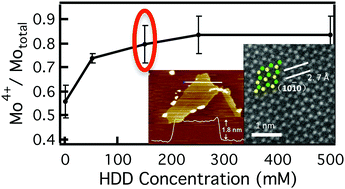Solution synthesis of few-layer 2H MX2 (M = Mo, W; X = S, Se)†
Abstract
Two-dimensional transition metal dichalcogenides (TMDs) exhibit a wide range of properties depending on the chemistry of the transition metal element and the chalcogen, making them promising candidates for electronic applications. Current TMD thin films are either derived from bulk minerals, hence limited by the impurities, defects, and the availability of raw materials, or deposited using high vacuum or high reaction temperature processes. Here, we describe a versatile method to directly synthesize few-layer 2H MoS2, MoSe2, WS2, and WSe2 flakes from thermolysis of organometallic precursors in the presence of a chalcogen element using microwave-assisted heating. We study how the concentration of a reducing agent, 1,2-hexadecanediol, affects the chemical composition of TMDs using X-ray photoelectron spectroscopy (XPS). The crystalline phase of these materials is determined as trigonal prismatic (2H) using Raman spectroscopy and scanning transmission electron microscopy (STEM). Both STEM and atomic force microscopy (AFM) indicate that these flakes are a few layers thick (∼2 nm) with a relatively large lateral size (∼2 μm).



 Please wait while we load your content...
Please wait while we load your content...